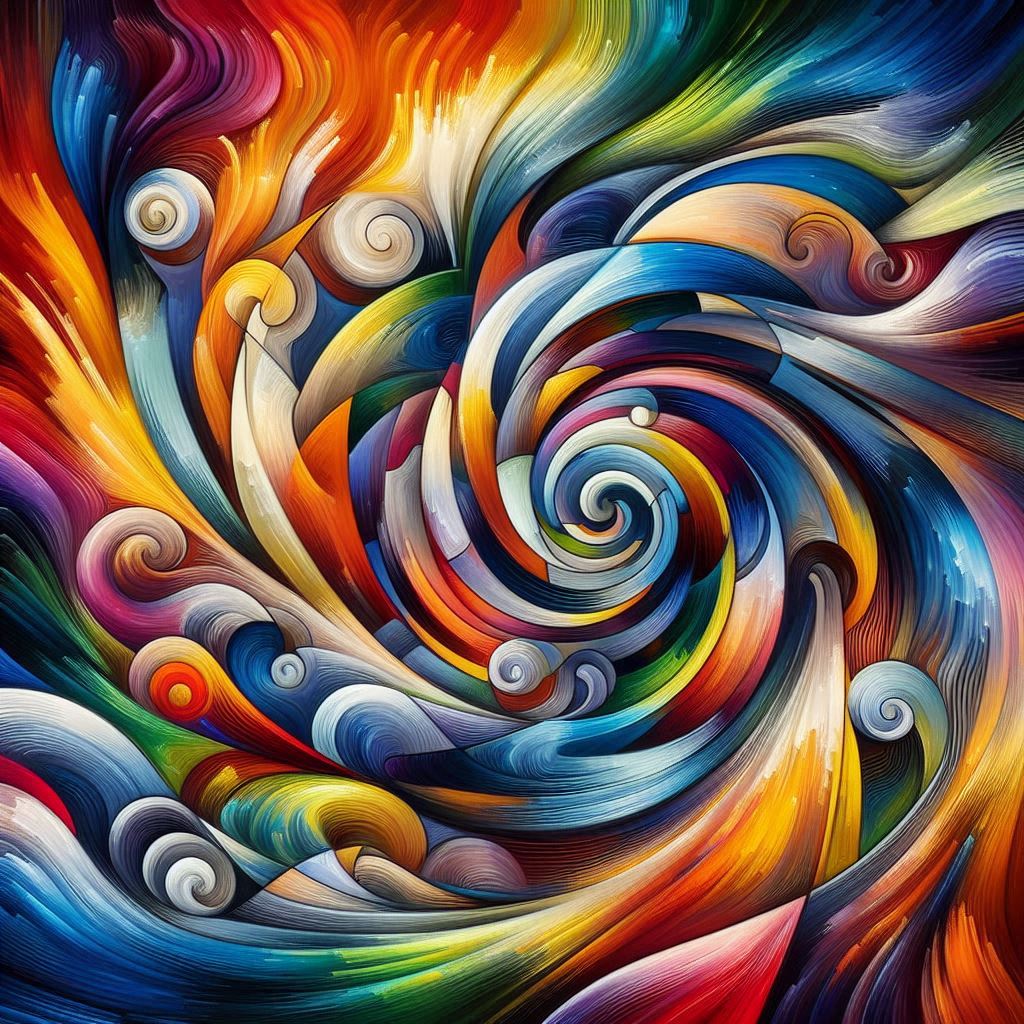Seeing the World Through an Artist’s Eye
The initial step in seeking inspiration for abstract art is developing a strong sense of observation. Daily life is presented with boundless visual stimuli—the trick is to see these moments through the eye of the artist.
Textures and Patterns: Observe the cracks in a sidewalk, the rust on a metal banister, or the detailed patterns in the bark of a tree. These urban and natural textures can form the basis of abstract pieces.
Colors in Everyday Life: Take note of the color harmonies that you come across. The way light plays on water, the way the colors diminish in a setting sun, or the bold juxtaposition of a graffiti wall can make for a phenomenal color palette.
Movement and Energy: Movement is frequently shown in abstract art. Draw inspiration from the wind-blown wave of leaves, the ripples of cloth, or the rush of a throng of people.
Documenting a visual diary or taking pictures of these moments on your mobile phone will help to solidify these impressions to be used in future work.
Emotional Responses as a Source of Inspiration
Abstract art has no obligation to reproduce literal forms. Rather, it sometimes exists as a tool for expressing emotions. Listen to the way your space affects you.
Memories and Associations: A color or texture might bring something to mind or suggest a feeling. Express these emotions in expressive brushstrokes or textured layers.
Music and Sound: Let soundscapes direct your work. Whether the rhythmic buzz of a coffee shop or the peaceful chirp of birds, sounds can dictate the rhythm and pace of your work.
Personal Experiences: Look into your day-to-day life. Even ordinary moments—a conversation, a walk in the park, or a bus ride—can engage emotions that stimulate your creativity.
Experimenting with Found Materials
Incorporating found objects into your abstract work is an excellent means of providing your artwork with a more tangible connection to the world that surrounds us.
Collage and Assemblage: Collect items such as newspaper cutouts, packaging materials, bits of cloth, or leaves. These add depth and storytelling to your artwork when layered.
Natural Pigments: Try utilizing natural pigments surrounding you, like dirt, charcoal, or petal hues, to make natural, earthy shades.
Household Tools: Use unusual tools like sponges, forks, or credit cards to paint, achieving strange textures and designs.
Taking Inspiration from Nature
Nature is an endless source of inspiration for abstract art. The abstract nature of the shapes, vibrant colors, and recurring patterns in nature yield boundless resources for creativity.
Seasonal Changes: Capture the mood of the changing seasons in your color scheme and textures. The coziness of fall foliage, the starkness of winter scenes, or the blooming of spring flowers can all influence your artwork.
Water and Sky: Observe the fluidity of water and the shifting colors of the sky. These subjects often lend themselves to expressive, flowing compositions.
Micro and Macro Perspectives: Observe closely the veins in a leaf or the spiral in a seashell. Or observe large landscapes and depict abstractly their majesty.
Discovering Beauty in Urban Living
Cityscapes are a treasure trove of inspiration, from the lines of architecture to the mayhem of street life. Abstract artists can bring the essence of city energy into their artwork.

